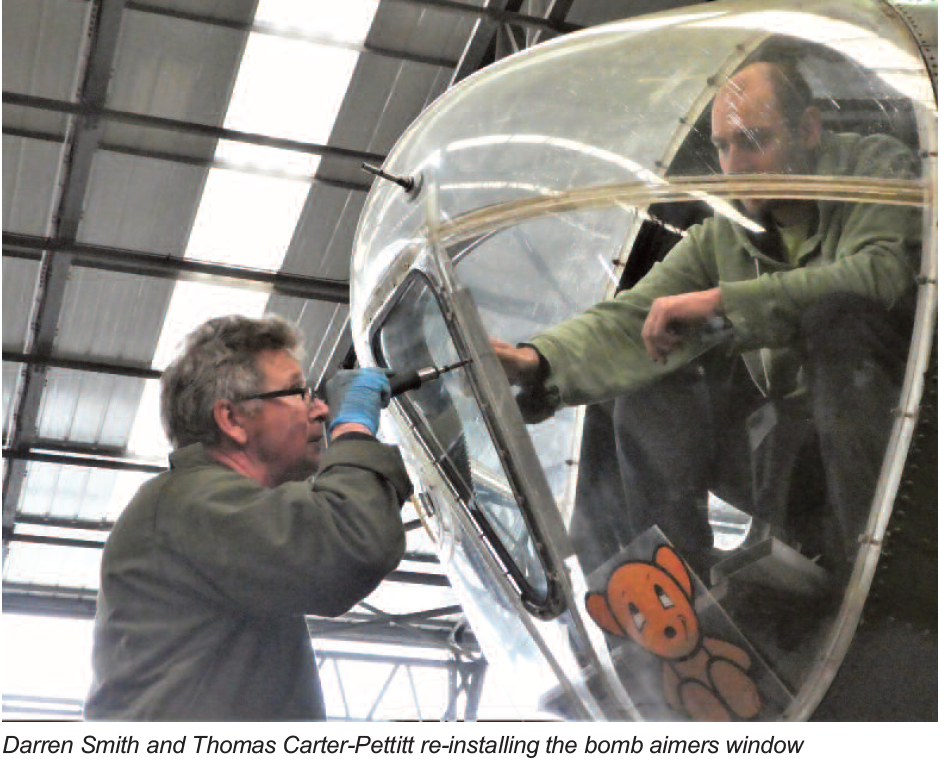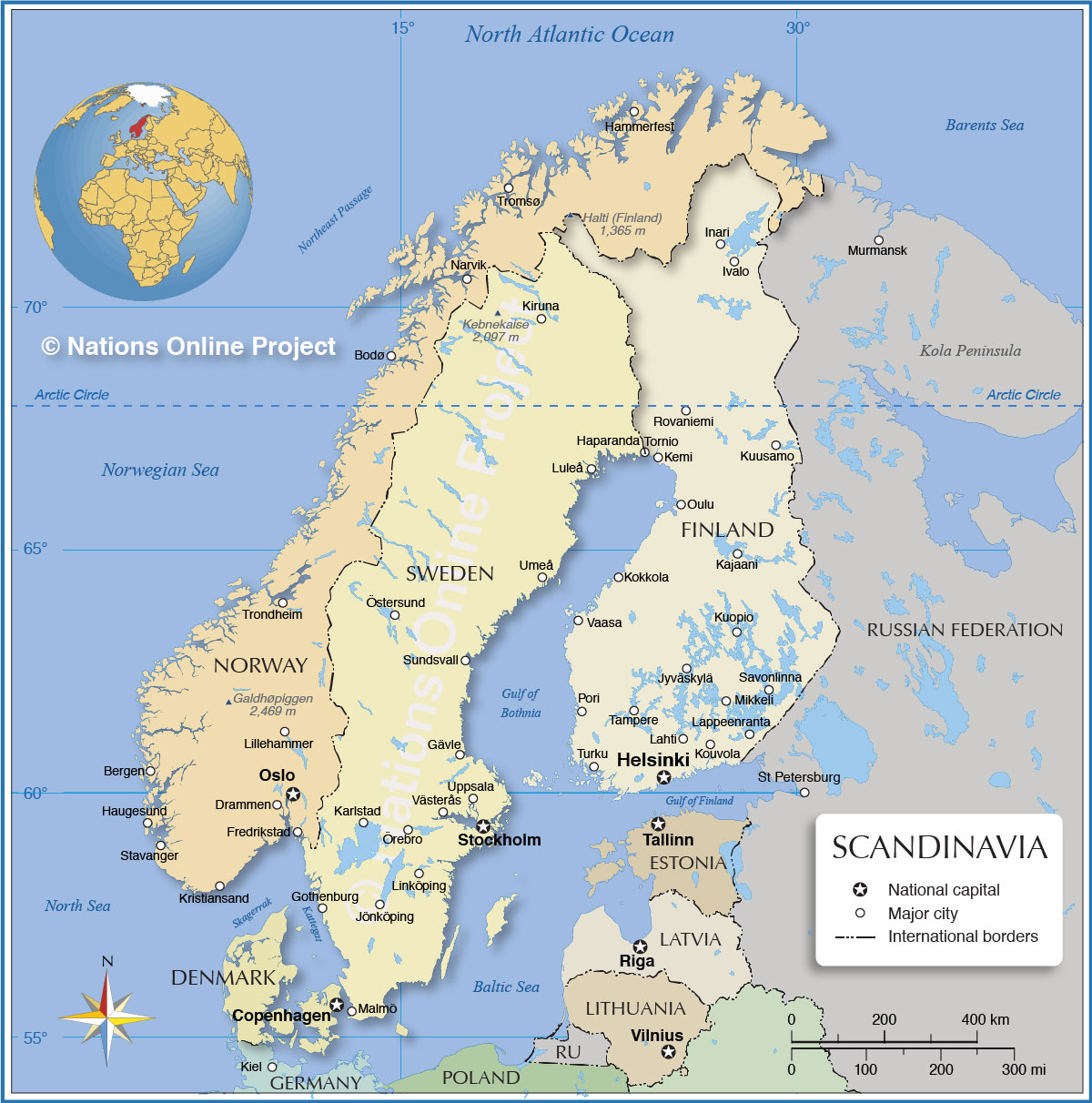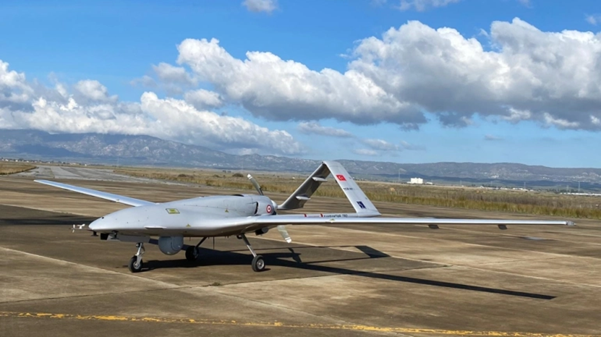By Pierre Tran
Paris – The use of low-cost armed drones in bloody conflicts in central Europe, North Africa and the Middle East highlights the need for countermeasures, while the UK is showing interest in ordering these cheap and deadly weapons.
Armed unmanned aerial vehicles were used to wreak havoc in the disputed Nagorno-Karabakh region between Azerbaijan and Armenia, and military drones have flown in Libya, Saudi Arabia and Yemen.
Interest may have been heightened following a Jan. 26 air attack on Riyadh, just days after a Jan. 23 interception of a missile or drone in the skies over the Saudi capital.
Those air attacks were just the latest attempts to hit Saudi Arabia, with the Yemeni-based Houthis insurgents previously having sent armed drones.
The market for armed tactical drones appears to be thriving.
The Azeri use of the Turkish TB2 drone against Armenian forces sparked UK interest to acquire a similar weapon, daily The Guardian reported Dec. 29.
That type of UAV evades conventional air defenses, flying too slow and too low to be detected by older military radars and they escape missiles designed to hit fighter jets, incoming missiles and other airborne threats.
A lack of necessary kit fuels potential demand for countermeasures to detect, identify and disable the tactical drone.
In the pipeline of prospective threats, there are mini- and micro-drones carrying grenades, calling for further countermeasures, an industry executive said.
Lessons to be Learned
A Nov. 24 research note from the European Council on Foreign Relations, a think tank, pointed up the need for Europe to learn lessons from the critical Azeri use of tactical UAVs in the Azeri-Armenian conflict.
The Azeri forces flew drones to locate Armenian forces and hit them hard.
Armenia is armed with three Russian surface-to-air missiles developed in the 1980s, namely S-300PT and PS, and 9K37M Buk-M1, said the note, titled Military lessons from Nagorno-Karabakh: reason for Europe to worry.
“While the missiles are still potent, their sensors are designed to detect, identify and track fast-moving fighters, and their moving-target indicators disregard small, slow drones,” the note said.
Those missiles were modern, but the Armenians lacked computer systems for “plot fusion,” namely gathering and combining raw data from different radars to give a “aggregated situation report,” the note said.
That lack of radar network meant Armenian forces failed to detect and track advanced drones or stealthy aircraft, the report said, and they also lacked jammers to disrupt signals linking the Azeri drones to ground controllers.
It was only in the last days of the fighting, the Russian forces used an electronic warfare system, dubbed Krashukha or Belladonna, to disable Azeri drones on deep strike mission, the report said.
Those Azeri drones were supplied by a Turkish manufacturer, Bayraktar, Asia Times reported Oct. 20.
The Azeri forces deployed another weapon, the Harop drone from Israel Aerospace Industry, the ECFR note said. The Harop, known as a “loitering munition,” flew over the combat zone, waiting for an opportunistic strike, with no need for a command and control link to a ground station.
The outlook is that regional powers Israel, South Africa and Turkey, as well the major powers China, Russia and the US, will learn from the Azeri operations to develop artificial intelligence and lethal autonomous weapon systems, the note said. That is in contrast to a European move toward outlawing such deadly autonomous systems.
A military victory allowed Azerbaijan to secure control of Nagorno-Karabakh, and the retreat of Armenia from the disputed region.
The low-cost Turkish drone used in that Caucasus conflict drew UK interest in acquiring similar aircraft, The Guardian reported. Such an acquisition could be in the five-year defense review due to be unveiled in the coming months.
The UK defense minister, Ben Wallace, said in December the Turkish TB2 drones showed how other countries were “leading the way,” the report said. Those drones had destroyed hundreds of armored vehicles and even air defense systems, he said. There was also video evidence suggesting the drones killed many people in Nagorno-Karabakh, the report said.
A TB2 drone was estimated to cost $1 million-$2 million per unit, far less than the unit price of almost $20 million the UK was paying for the General Atomics Protector next-generation drone, the report said.
Drone Wars
The proliferation of UAVs is such that the skies over Libya were “possibly the largest drone war theater now in the world,” the UN special representative to Libya, Ghassan Salame, said Sept. 25.
Both sides of the civil war flew drones, hitting civilian targets with a “collateral effect” of creating 120,000-130,000 refugees, he said.
On the one side, the Libyan National Army led by Khalifa Haftar, flew the Chinese Wing Loong drone, while on the other side, the Government of National Accord flew the Turkish TB2, broadcaster Al Jazeera reported May 28.
Ankara intervened in Libya December 2019 to support the UN-backed GNA, deploying the TB2 to counterattack the LNA seeking to seize Tripoli.
Those Turkish drones hit ground targets and provided air cover for GNA troops, helping to turn the tide against the advancing LNA forces.
Some of the Turkish know-how in drones has its roots in the engineers who worked with Airbus on the Talarion project for a European medium-altitude, long-endurance UAV, the executive said. Following cancellation of Talarion, the Turkish engineers were recalled, bearing knowledge of how to build a drone.
Meanwhile in Yemen, the Houthi rebels flew a bomb-bearing drone to strike the government in Aden, CBS News reported Dec. 30, reporting Al-Arabiya, a Saudi television channel. That UAV was downed.
Saudi Arabia bristles with weapons against air threats, with Patriot, Hawk, Crotale and Shahine missiles, backed by counter battery radars.
The air defense in September 2019 failed to prevent cruise missiles and drones hitting two Aramco installations, shuting down half of Saudi oil production.
That air strike effectively opened a sales window for anti-drone weapons.
Seeking Countermeasures
The ECFR note pointed up a general lack of European capability to fight back against drones — apart from France and Germany.
The need is for the right kind of radar, command and control systems, and weapons to detect, identify and “neutralize” low-flying, low-speed UAVs, the industry executive said. Satellites can also help fight against drones.
Hensoldt is delivering a first batch of 10 Spexer 2000 3D radars to Kongsberg Defence & Aerospace for the counter-unmanned aerial system for the German army, the German electronics company said in a July 28 2020 statement.
The Spexer anti-drone radar and remote control machine gun are on a Boxer armored vehicle, meeting Nato requirements for a very high readiness joint task force for 2023.
That technology stems from radars for surveillance of desert borders and harbors in Saudi Arabia, deals won by the then EADS, the executive said.
Hensoldt was formed from the divestment of Airbus’s defense electronics business in 2018.
In France, there is radar which could spot drones, at the highly protected naval base for nuclear ballistic missile submarines at Ile Longue, western France.
European missile maker MBDA gave a demonstration Nov. 6 2019 to 15 foreign delegations the anti-drone capabilities of its Licorne command and control system, firing a Mistral missile against a UAV.
Communications & Systèmes, a systems integrator, has delivered two prototype “hard kill” weapon systems in the French Army’s Arlad anti-drone project, CS director Egidio Cau said Jan. 28.
These technology demonstrators are fitted on armored vehicles, which could protect army bases and mobile deployments such as operations in Mali. CS delivered the first unit in December.
The first trials used conventional 12.7 mm machine gun rounds, with the next step of an armored vehicle firing a 40 mm canon with “intelligent munitions” programmed to explode in mid-air to create an airburst — a 5×5 meter cloud of metal — to destroy the drone in its flight path.
Trials on that airburst project are due to this year. There is a small amount of government funding on that project.
For a longer range 10-15 km interception of larger drones, CS plans to give a demonstration this year of a missile guided by a Saab Giraffe radar.
Cau declined to say which missile would be fired. The Boreades anti-drone command and control system was “agnostic” on weapons, which could be from MBDA, Thales, Rheinmetall or an Italian company.
CS is also testing a drone with 15 kg of payload to intercept an enemy drone, to jam or blow it up.
The company delivered in 2018 18 Milad anti-drone systems with 30 jamming guns to the French forces, based on its Boreades system.
CS is working on an overall command and control system to track drones and various anti-drone weapons, highlighting the need for interoperability as there are several anti-UAV defenses.
Other means to down drones are high powered electromagnetic and microwave weapons to disrupt the drone’s signals. Electronic countermeasures can be used to blind the UAV, interfere with its GPS self-positioning, and redirect its flight.
There is work on wiring artificial intelligence into C2, seeking to make detection, identification and classification more sure.
The difficulty is to find countermeasures for micro and mini drones such as the Parrot and Quad, hard to detect and which could be adapted to carry a grenade.
Lasers Work In Progress
Lasers are also being developed to take down drones.
Cilas was testing its HELM-P laser weapon against UAVs at the Direction Générale de l’Armement Biscarosse missile base, southwest France, the technology office Agence d’Innovation de Defense said Nov. 9 on social media.
Cilas is a unit of the Ariane space rocket group.
“The first results are promising,” AID said in a statement, adding that the laser could eventually be extended to hit rockets, artillery, and mortar rounds.
Cilas leads a 16-strong TALOS (Tactical Advanced Laser Optical System) consortium, in a three-year, €5.4 million study for a high-powered laser. The European Defense Agency backs that research project, a step toward development of a weapon.
MBDA is working in three laser projects, with Germany leading the way, a defense source said.
MBDA and its partner Rheinmetall won a German contract for a demonstrator for a naval laser weapon, the missile company said Jan. 28.
The deal, worth in the low 10s of millions of euros, will see Rheinmetall supply the laser and MBDA delivering the tracking, operator’s console, and plugging the laser into the command and control system. The demonstrator is due to be tested onboard the F124 Sachsen frigate next year.
In the second project, MBDA leads the UK Dragonflyer consortium, which showcased a beam director turret at the 2017 DSEI trade show in London. That study is worth £30 million ($41 million) and the consortium includes Arke, BAE Systems, GKN, Leonardo, Marshall, MBDA and Qinetiq.
MBDA is also in the European TALOS study.
The drone threat has fuelled export sales of a mature air defense system dubbed ForceShield, said Jean-Philippe Hardange, Thales director of strategy for integrated airspace protection systems.
“There is a lot of demand,” he said, with sales growth in that sector clearly outstripping the two-three percent rise in defense budgets of Nato allies.
The UK is operating the system initially armed with Starstreak missiles, then with Lightweight Multi-role Missiles.
Export clients bought the weapon with Ground Master 200 radar and C2 system. The radar could pick up a tactical UAV at a nominal range of 50-100 km, while a smaller drone could be detected at a nominal range of 15-20 km.
France has ordered the RapidFire 40 mm naval gun to arm four fleet auxiliary ships being built, and the gun could down drones and hit fast moving boats, he said. The first ship is due for delivery next year and enter service in 2023.
Thales gave a demonstration of a land based RapidFire in 2013. There were no immediate orders. A sales pitch could point out how army, air force and navy could use that version to protect land bases.
The gun is supplied by CTAI, an Anglo-French joint venture of BAE Systems and Nexter.
Be Selective
There is clearly a market for anti-drone weapons, with a range of technologies. The question is which approach is the most practicable.
“There are limits to technology,” said Henry de Plinval, director of the drone program at Onera, a research office specializing in aerospace defense. “Technology is not magic.”
The office expects to complete by the end of this year Shield its two-year study into the technology and operational aspects of anti-drone measures under development, he said.
The study aims to give expert opinion on the limits of technology, to point government and industry in the right direction for countermeasures.
The aim is to be “more precise,” he said.
In research for drone detection, Onera is drawing on work on passive radar, using the general background of electromagnetic signals for devices such televisions to detect UAVs.
There are studies of identification to confirm the object is a military drone and not a bird or a tree. That includes advanced research into laser imaging detection and ranging (LIDAR) for 3D identification of targets at long distance of “several kilometers,” he said.
To “neutralize” drones, there is the conventional GPS jamming, but there are strict rules on GPS, on which airlines depend, he said. A more sophisticated approach is GPS “spoofing,” to divert the drone to another flight path.
A “kinetic” hit is fine in open spaces such as deserts, but harder to use in urban combat, he said. Alternative measures will be needed.
There is an operational need, but technology needs time, he said.
Drones over the Med?
Meanwhile, tension between Greece and Turkey over territorial claims over the Eastern Mediterranean presents a marketing opportunity for drones.
A land and sea surveillance project dubbed Semaphore is seen to be of potential interest to the Greek forces, the executive said. That system offers a mix of border surveillance and flying mini UAVs over the sea.
Four fixed-wing drones, each flying eight hours, could provide 24-hour surveillance over the Eastern Mediterranean. A Greek coast guard patrol boat could launch a drone by catapult and recover with a net, or a drone could be launched from one of the Greek islands.
An extended network of UAVs and radars would allow Greece to track Turkish naval activity, and follow Turkish moves on the island of Cyprus, close to mainland Turkey and the subject of long standing dispute.
Greece and Turkey are in dispute over claims of exclusive economic zone in that part of the Mediterranean, where Ankara is looking for oil and gas reserves.
Athens has ordered 18 Rafale fighter jets and missiles in a deal worth €2.5 billion ($3 billion), pointing up the tension with Ankara.
Featured photo: The Turkish-made Bayraktar TB-2 drone.
Also, see the following:







